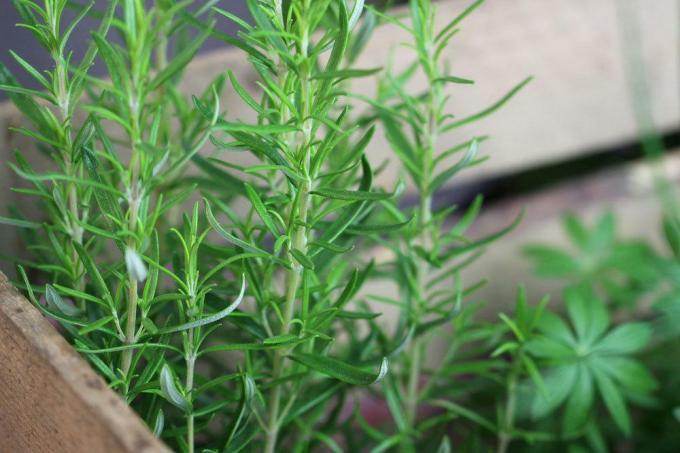
table of contents
- origin
- Overwinter
- Frost resistance
- sorts
- Location
- In the pot
- care
- Beginning of spring
Has been for many years rosemary An indispensable part of German kitchens. The Mediterranean culinary herb can also be found more and more often in German gardens or on the balcony or the terrace. As a Mediterranean plant, rosemary does not tolerate our cold winter temperatures badly or not at all. Nevertheless, the following applies to wintering: not all rosemary is created equal, it depends on the variety.
origin
Botanical assignment and origin
The popular culinary herb, botanically Rosmarinus officinalis, is one of two species from the genus Rosmarinus. In botany the following subspecies are distinguished.
- Rosmarinus officinalis subsp. officinalis
- Rosmarinus officinalis subsp. palaui
- Rosmarinus officinalis subsp. valentine
All species are found mainly in the western and central Mediterranean area. The plant has been cultivated in the eastern Mediterranean and the Black Sea since ancient times. The herb was first mentioned in Central Europe in the 9th century. Century.
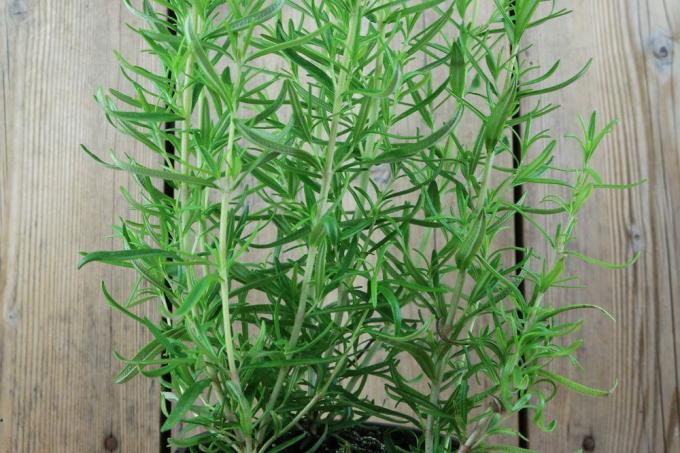
Overwinter
Rosemary is a perennial plant. Depending on consumption (harvest), location and care, it can be a companion for a few years. How it best survives our winters depends on the variety. Basically, rosemary can be divided into three winter groups.
- (conditionally) hardy varieties
- winter hardy varieties
- neither hardy nor hardy varieties (sensitive varieties)
Tip: No matter what kind of rosemary belongs to, it is not allowed to fertilize in winter.
Frost resistance
Winterproof or hardy?
When it comes to the wintering of plants, the two terms “hardy” and “hardy” appear again and again, also with rosemary. Although both terms suggest frost resistance, only hardy plants survive the German winter outdoors.
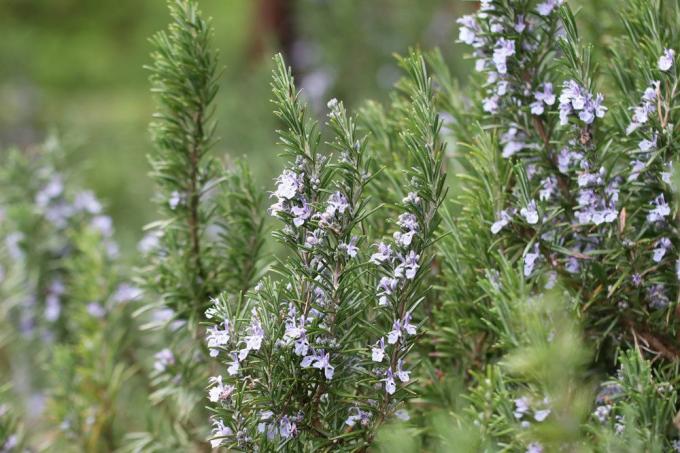
For the wintering of the rosemary this means:
- only a few hardy varieties
- many winter hardy varieties
sorts
Hardy and hardy varieties
Since there are only a few really hardy varieties, you should orientate yourself on the varieties when buying. The hardy varieties include the following.
- Veitshöchheimer Rosemary (special breeding for German conditions)
- Blue Winter (down to minus 20 degrees Celsius)
- Arp (extremely insensitive to frost)
- Hill Hardy (partially hardy, needs protection)
Tip: If rosemary comes out of the pot at the supermarket, it is in most cases a non-hardy variety. Better to buy hardy rosemary from a nursery.
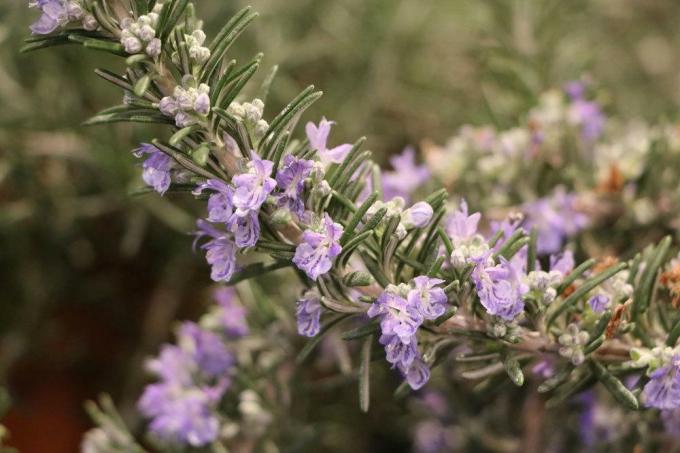
Hardy Varieties can withstand cold spells, depending on the variety, between minus 15 and minus 22 degrees Celsius. Winter festivals Varieties tolerate temperatures around freezing. If the minus degrees fall into the single-digit range, you already need appropriate protection.
Tip: Winter-resistant varieties should only be used in the German Weibau regions or In the mild climate zones, spend the winter outdoors with protection against the cold from leaves and brushwood. In all other areas they should overwinter in a pot at 10 degrees Celsius.
Under no circumstances should harvesting be carried out during the winter. The harvest season ends in mid-August, as cold can penetrate through the interfaces.
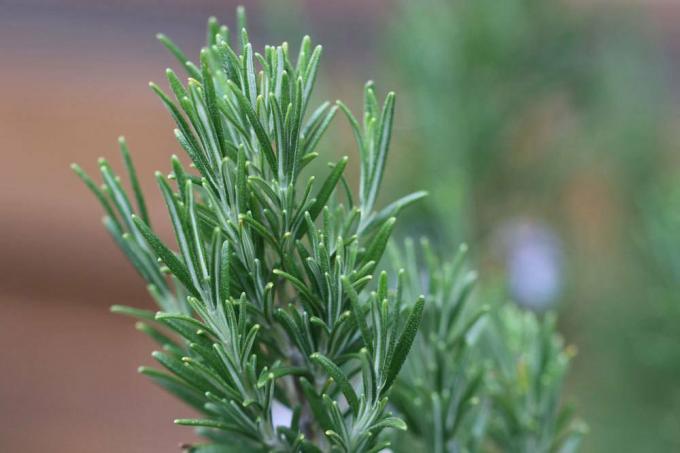
Location
Location and other criteria
In order for rosemary to survive the cold season well, other criteria must be observed in addition to the variety.
This includes:
- Location
- age
Location
During the winter, neither the branches nor the roots of the plants should freeze to death. Rosemary also needs a lot of sun in winter. Ideal locations for the rosemary are as follows.
- full sun south facing
- in front of walls or house walls (radiate heat)
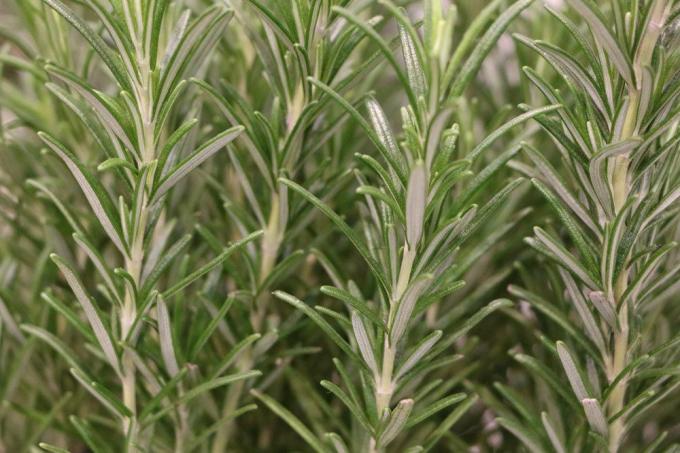
age
Young rosemary is far more sensitive to frost and cold than older plants. Only from the age of three, when the plant is deeply rooted in the ground, can it survive the cold season well.
Therefore, young plants such as winter hardy rosemary varieties should:
- overwinter in a pot
- Frost free
- at temperatures around 10 degrees Celsius
Tip: Older plants enjoy protection from the cold from brushwood and leaves. Make sure there is sufficient air circulation, because rosemary cannot tolerate high humidity.
In the pot
Winter in the pot
Winter hardy rosemary can of course also be grown in a pot. With the appropriate protection, the plants can even hibernate outdoors in a sheltered location. However, he cannot tolerate a change of location between inside and outside. If he was brought inside out of concern, he should also be allowed to stay inside. Because then he is used to the warmer temperatures in the house and can no longer cope with the cold temperatures outside.

One of the most important measures for wintering outdoors is protection against:
- Sun
- Wet and cold
Sun protection
Although rosemary is a sun worshiper, strong sunlight is not good for it in winter because a lot of water evaporates from the leaves. If he then does not get any water supply, he dries up.
Wet and cold
To avoid the ingress of moisture and cold, you should protect rosemary from below and above.
For protection "from below":
- The pot in winter
- on a styrofoam mat or
- a thicker wooden board
So cold and wet cannot penetrate. Also, make sure that the pot does not freeze to the bottom. For protection "from above", cover the soil with leaves or brushwood, because too much moisture can lead to rot in the root area and consequently to the death of the plant.

Tip: When covering, ensure that there is sufficient air circulation so that no putrefactive agents can become lodged.
If heavy or continuous rain indicates that the plant must be additionally protected from moisture with a frame plus a tarpaulin. A small canopy on the balcony or terrace is also a good protection against rain. In the case of large plants, you should also protect the branches. This works best when the plants “get under the hood”.
Suitable hoods are:
- Jute covers
- Plastic fleece
- fixed bamboo mats
- Coconut carpets
care
Winter care in the pot
Although rosemary should be protected from moisture when wintering in a pot outdoors, it does need to be watered from time to time.
- little watering
- Plant must not dry out
- Avoid waterlogging
If the rosemary has "got under the hood", it must be removed regularly, on frost-free days, for ventilation.
Tip: Airing is also an opportunity to examine the plant for frost damage.
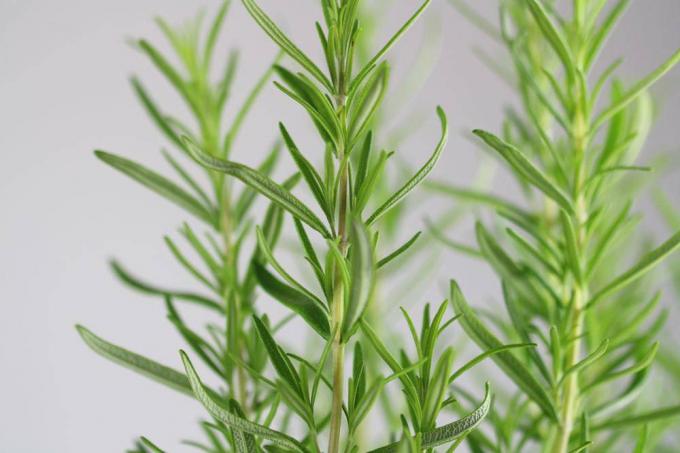
Beginning of spring
End of wintering
If the temperatures rise again permanently above zero degrees Celsius in spring, the winter protection can be removed. In the case of rosemary that have overwintered under the hood, you should initially only use the hood for a few Remove hours so that the plant can get used to the new climatic conditions again can.
Rosemary sensitive to cold and frost
While hardy and, depending on the region, hardy rosemary can hibernate outdoors, many varieties, including "Salem" or "Pine Rosemary", do not survive the German winter outdoors. They're not even winterproof. That is why they are also grown in pots.
Since all types of rosemary love the sun, varieties that are sensitive to the cold should also be left outside during the summer. Cultivation as a pure houseplant is not recommended, as most apartments, even light ones, are too dark for the plant. That is why the window sill is not an ideal location in summer either.

The ideal winter quarters for pot rosemary:
- is light
- has a temperature between 4 and 12 degrees Celsius
Suitable locations are, for example:
- Stairwell
- Garden or greenhouse
- light cellar
- little heated bedroom
Tip: If the winter is mild, pot rosemary can also overwinter outdoors. Then the pot has to be wrapped with a protective film and the plant has to be protected with sticks.



